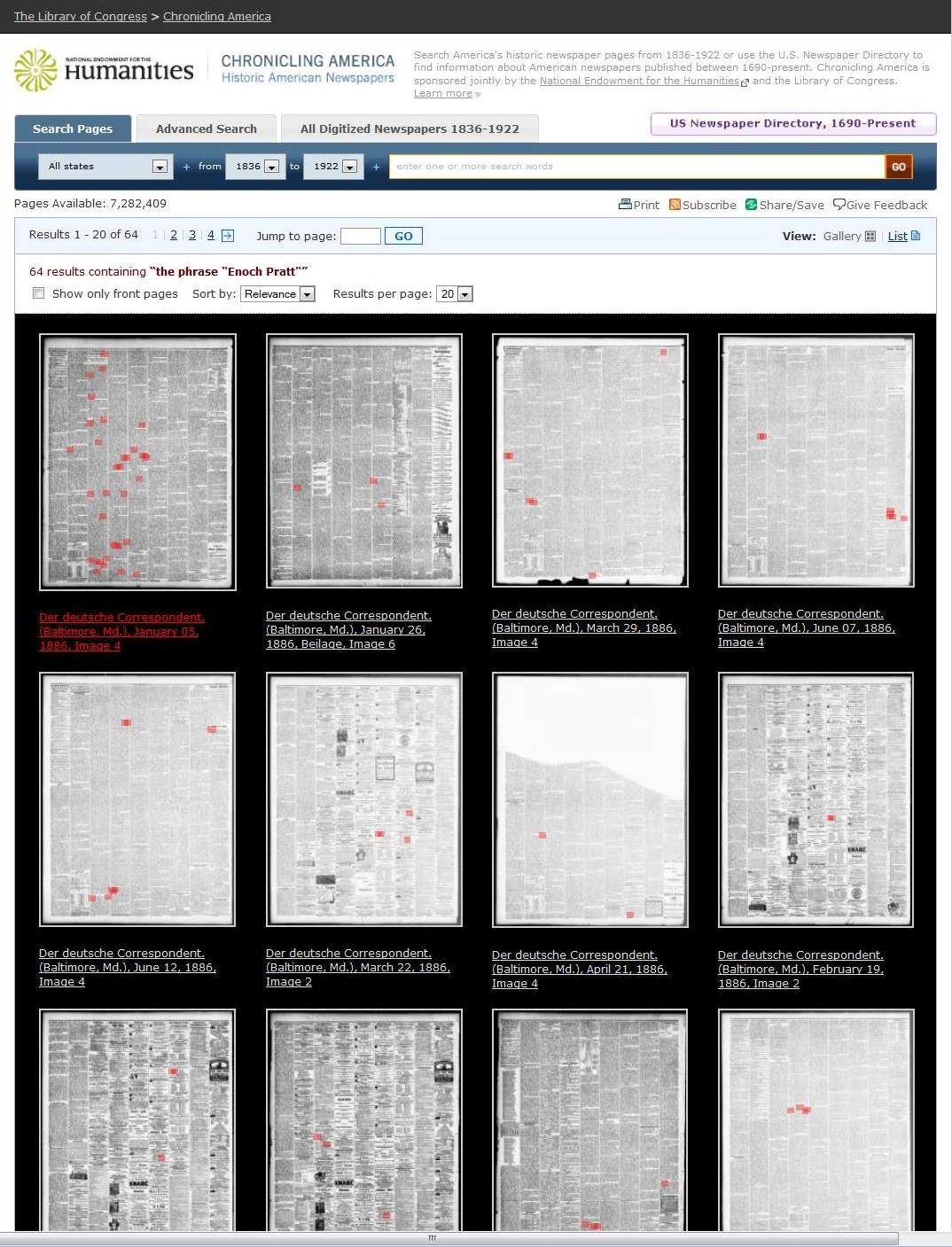The first issues digitized by the Historic Maryland Newspapers Project are now live on the Library of Congress database Chronicling America. (See the official announcement here!) Thus far, only issues of the German-language newspaper Der Deutsche Correspondent are online; however, some English titles will be available later in the year.
This post will provide an overview of how to use Chronicling America‘s interface to search for digitized newspapers. Click on the images to see an enlarged view, and if you have any questions, feel free to ask them in the comments!
Searching in Chronicling America
The easiest way to search for digitized Maryland newspapers is to use the “Search Pages” tab on Chronicling America’s homepage. From this bar, you can narrow your search by state, year, and/or keyword.

Even more options are available from the “Advanced Search” tab.

From this tab, you can search by newspaper title, limit you results to only front pages, search English-, Spanish-, French-, or German-language newspapers, or perform more precise keyword searches.
If you perform a search using either one of these tabs, you will see thumbnails for the first 20 results that meet your search criteria. This is called the “gallery view” of your results. You can switch your view to see a simple list of your search results instead using the “List” link in the top right corner of the results display.


Click on a result to get a closer look at that page.

Using the buttons and links in the newspaper viewer, you can zoom in and out on the page, view additional pages of the issue, and download pages.

If you used the keyword search feature, you’ll notice that the search terms have been highlighted in red. For example, I used the “Advanced Search” tab to limit my search for the phrase “Enoch Pratt” to newspapers from the state of Maryland and only from the year 1886, the year that the Enoch Pratt Free Library opened in Baltimore.

My search returned 64 results. The first result has my search phrase “Enoch Pratt” highlighted several times, plus it is dated January 5, the day that the library opened. I’ll click on the page to get a closer look.


Zooming in on the article reveals the following headline:
Die “Enoch Pratt-Freibibliothek.” Offizielle Eröffnung der großartigen Stiftung des Hrn. Enoch Pratt.
This roughly translates to:
The “Enoch Pratt Free Library.” Official opening of the great Foundation of Mr. Enoch Pratt.
Browsing newspapers in Chronicling America
If you’re more interested in browsing newspapers, the calendar view offers a quick way to see dates for which digitized newspapers are available for a given title. Getting to the calendar view for a title is easy. Click the third search tab, “All Digitized Newspapers 1836-1922,” and limit your results by state, ethnicity, or language.

If you have already performed a search and are viewing one of the result pages, you can also navigate to the calendar view by clicking the “All Issues” link in the newspaper viewer.

I limited my search to the state of Maryland to in order to see which titles have been digitized from Maryland thus far.

Click the calendar icon in the “Browse Issues” column to see the calendar view.
Use the dropdown menu to view different years. Dates with an active link have at least one edition for that date; click to view the issue(s) for that date.

Additional Resources
Those are the basics, but if you need more information, check out the plethora of online tutorials that others have created for Chronicling America:









 Special Collections & University Archives is pleased to announce 600 historic community radio broadcasts are
Special Collections & University Archives is pleased to announce 600 historic community radio broadcasts are 















